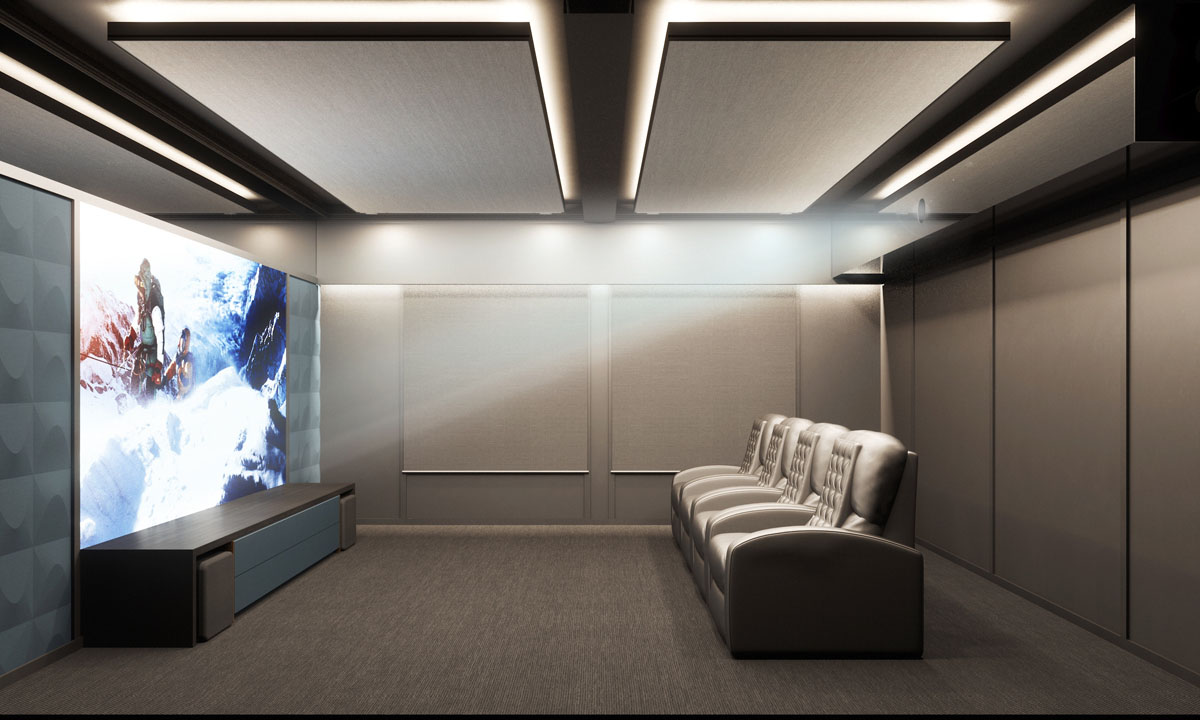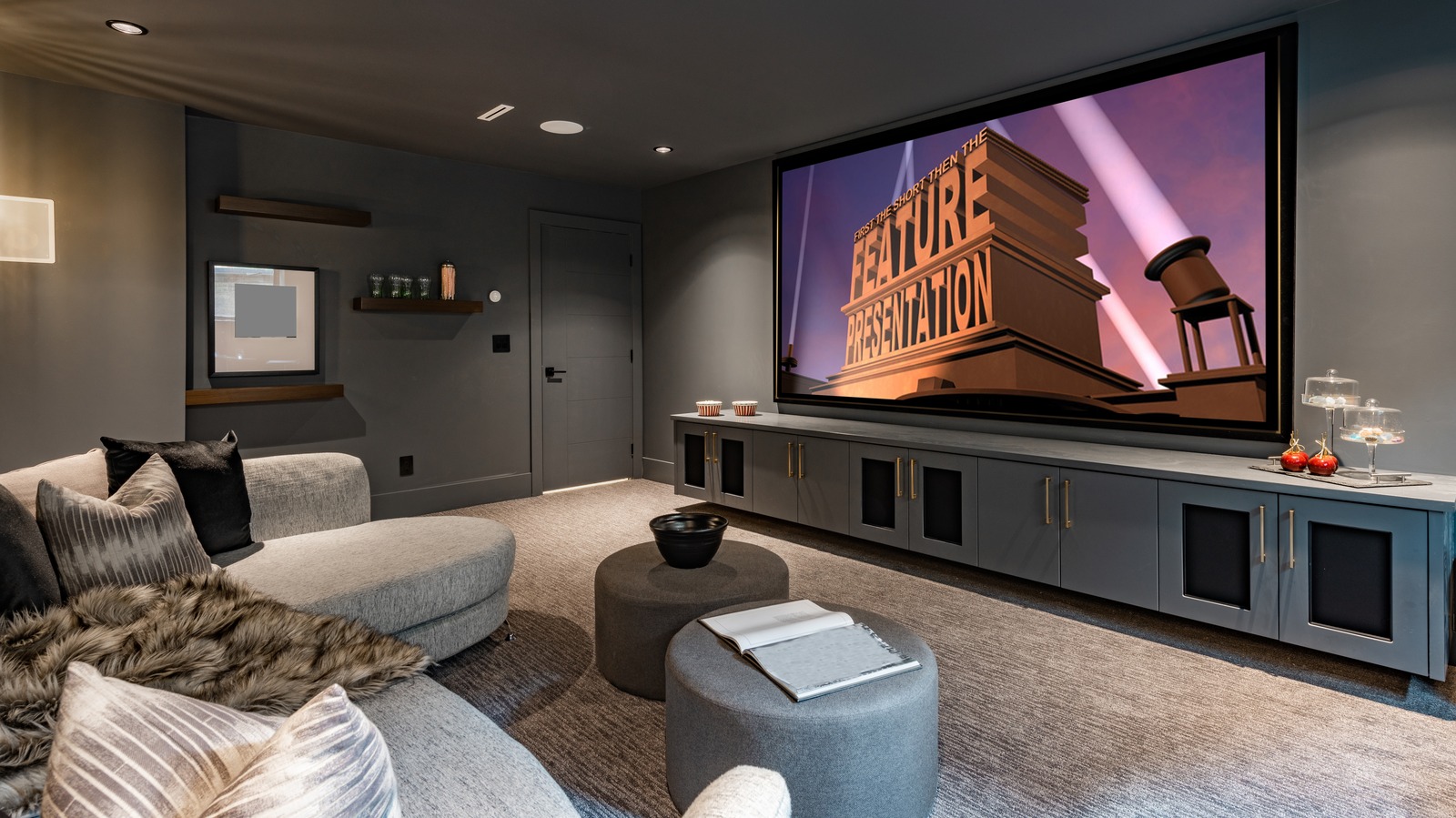Upgrade Your Living Space with Tampa Home Theater Installation
Upgrade Your Living Space with Tampa Home Theater Installation
Blog Article
Home Theater 101: Whatever You Need to Know for a Motion Picture Experience at Home
Developing a home theater that measures up to the cinematic experience of a commercial theater entails careful consideration of multiple elements, including display selection, audio systems, and area layout. Each aspect plays a critical function in accomplishing the desired atmosphere and functionality. Whether you are pondering the ideal screen dimension or the complexities of border audio, recognizing these basics is important. As we discover these important components, it comes to be obvious that the options made can significantly influence your overall viewing experience, leaving one to ponder how these choices will certainly form your individual cinema.
Choosing the Right Screen
When setting up a home cinema, selecting the appropriate display can make or damage the viewing experience - home theater installation tampa. The display works as the focal point of your arrangement, influencing image high quality, viewing angles, and overall visual. Key aspects to take into consideration consist of screen kind, size, and resolution
Initially, establish the ideal display size based upon your room measurements and seating range. A basic guideline is to rest about 1.5 to 2.5 times the angled screen dimension for optimum watching. Next off, select between various screen kinds, such as fixed-frame, motorized, or retractable displays, each offering unique advantages. Fixed-frame displays generally provide the very best image top quality, while motorized options permit adaptability precede use.
Resolution is one more crucial aspect. For a genuinely immersive experience, think about a screen created for 4K and even 8K content, making sure intensity and clearness. In addition, think about the screen's gain, which affects brightness and comparison; a higher gain can improve brightness in well-lit spaces, while a lower gain may be preferable for darker environments.
Choosing Sound Equipment
Audio devices is a crucial element of any type of home theater system, dramatically boosting the overall watching experience. The choice of audio gear can identify the depth, quality, and immersion of noise, vital for producing a cinematic atmosphere.
When choosing audio tools, take into consideration a border stereo, which usually consists of a receiver, several speakers, and a speaker. A 5.1 or 7.1 network system is suggested, where the first number stands for the audio speakers and the 2nd the subwoofer, providing an immersive soundscape. The receiver is the heart of the system, managing sound and video clip signals, and should sustain modern layouts like Dolby Atmos for an improved spatial experience.
Quality audio speakers are crucial; try to find designs that offer a well balanced sound profile with excellent bass action. Floor-standing speakers can produce richer noise, while shelf options conserve area. Additionally, consider cordless alternatives for convenience of installment, although wired systems frequently supply premium performance.

Optimal Seating Arrangements
Developing an ideal home movie theater experience hinges dramatically on optimum seating plans. The setup of seats plays an essential function in both comfort and watching quality, directly impacting the general cinematic experience.
First, think about the display size and seeing distance. A typical guideline is to place seats at a range about 1.5 to 2.5 times the angled size of the screen. This makes certain an immersive experience without stressing the eyes.
Next, altitude is vital. If your seats remains in a tiered style, the back rows need to be more than the front to avoid blockages. For flat seats, make sure that the front row is not too near the display, and that everybody has a clear line of vision.
In addition, take into consideration the arrangement in regards to social characteristics. Group seats can enhance the public experience, while individual seats may be chosen for individual watching.

Finally, focus on comfort with ergonomic seats that supports extensive watching periods. Incorporating reclining chairs or cushioned seats can substantially improve the experience, making the home movie theater a favored location for both entertainment and relaxation.
Lighting and Setting
Effective illumination and atmosphere are crucial elements of a well-designed home theater, as they substantially affect the viewing experience. The best lighting can improve the cinematic feel, while inadequate selections can interfere with it. For optimal results, think about a layered illumination approach that consists of ambient, task, and accent lights.
Ambient illumination gives basic illumination, guaranteeing that the room is not completely dark, which can stress the eyes. Dimmer buttons are very recommended, enabling adjustments based on the web content being seen. Task illumination, such as wall sconces or floor lights, provides practical lighting for activities this link like reading or navigating the room without interrupting the overall ambience.
Accent lighting can be used to highlight architectural attributes or produce centerpieces, adding depth and interest to the area. LED strip lights behind displays or along shelves can offer a refined glow that boosts the aesthetic experience without overwhelming the viewer.

Wiring and Installation Tips
A well-planned electrical wiring configuration is important for accomplishing optimal efficiency in your house movie theater system. Proper wiring not just makes sure top notch audio and video clip signals yet likewise enhances the total aesthetic of your space. Begin by drawing up your design, identifying where each part will be placed, including your display, speakers, and receiver.
When picking cords, prioritize high-quality, suitably evaluated circuitry to minimize signal loss. HDMI cables need to be made use of for video clip connections, while speaker cable ought to match the requirements of your speakers and amplifier. Select in-wall rated cables to follow safety criteria and preserve a tidy look.

Final Thought
In summary, developing an exceptional home theater experience requires mindful factor to consider of our website different elements, consisting of display choice, audio devices, seating setups, illumination, and wiring. By prioritizing these variables, a cinematic atmosphere can be efficiently replicated, permitting for immersive seeing experiences that equal typical theater settings.
Producing a home theater that rivals the cinematic experience of a business theatre includes mindful consideration of multiple components, including display choice, sound systems, and space layout.When establishing up a home cinema, selecting the appropriate screen can make or break the watching experience. Next off, choose in between numerous display kinds, such as fixed-frame, mechanized, or retracting screens, each offering distinct benefits. For a genuinely immersive experience, take into consideration a display designed for 4K or also 8K content, ensuring sharpness and clarity.In summary, producing an outstanding home theater experience requires careful factor to consider of different components, including display selection, audio equipment, seating plans, lighting, and wiring.
Report this page